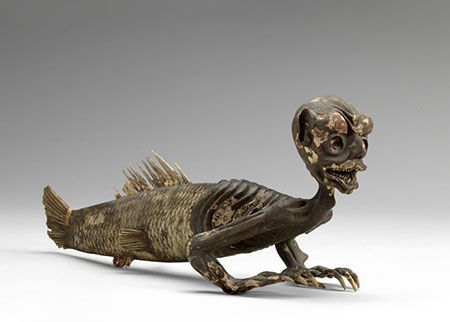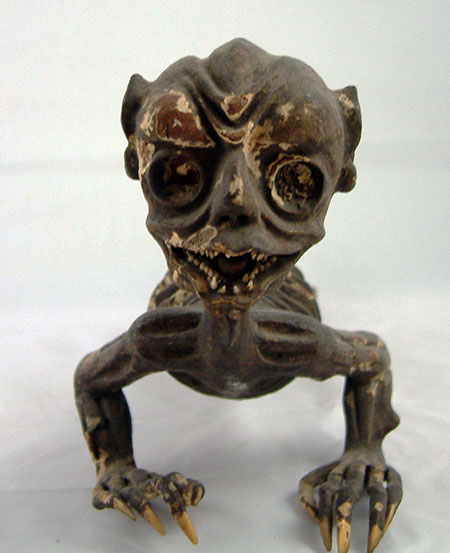
The Mead’s Feejee Mermaid, whose own particular origins are unclear, is of a family of specimens that started appearing in the 1800s as museum and circus attractions, particularly through the marketing of showman and huckster P.T. Barnum. About a dozen are said to remain in existence, with other notable specimens at the Peabody Museum of Archeology and Ethnology at Harvard University and the Horniman Museum and Gardens in London.
The Feejee Mermaid is not, of course, a mermaid, and it has nothing to do with Fiji. That’s just a moniker that Barnum attached for exotic cachet, said Sarr. The story goes that the mermaids were constructed in Japan out of the remains of fish and monkeys, but that’s not exactly true, either.
According to x-rays and other tests done on Amherst’s mermaid and others, “many of these so-called Japanese monkey fish are more like Japanese fish-fish,” Sarr said.
“They don't contain quite the extensive monkey elements that you'd think they might,” she said. Rather, they are a combination of painted paper-mache and wood, sometimes with fish bones and tail, as well as other mammal claws or hands.
Sarr traced some connections between the mermaids and “composite creatures” used in Shinto and Buddhist shrines into the 19th century, and sold at Japanese misemono, a kind of carnival or exhibition. An entire genre of prints is devoted to scenes from these carnivals.

Barnum’s mermaid was probably acquired first by Dutch traders and resold to an English sea captain in the 1820s. When a naturalist informed Barnum that the thing couldn’t be real, because there are no such thing as mermaids, Barnum replied, “That is no reason at all. And therefore I’ll believe in the mermaid and hire it.”
Barnum created his own naturalist, the fictitious Dr. Griffin, and would send fake letters tipping off newspapers in various cities about the good doctor and his mermaid. “I'm pretty sure this would impress even today’s best viral marketers,” Sarr said.
“When people who had actually been to Fiji, or had some experience with Fijian culture, tried to raise objections, Dr. Griffin shut them down.”
The question that nags Sarr is: why Feejee? She connected the moniker with 19th-century colonial culture, where a fascination with the Pacific islands filled museums and private collections with all kinds of objects associated with the lives of the island peoples. Into the 20th century, Barnum’s shows featured actual people billed as “Fijian cannibals.” It wasn’t accurate, but it sent the message, and filled seats.
“In a journal article from 1969, a Harvard anthropology professor refers to the Peabody specimen a Java mermaid, an odd and inconsistent error that points to the fact that, for most people, when they're trying to think of a name for these creatures, they kind of just think of the most exotic place they can think of and apply it to this mermaid,” Sarr said.